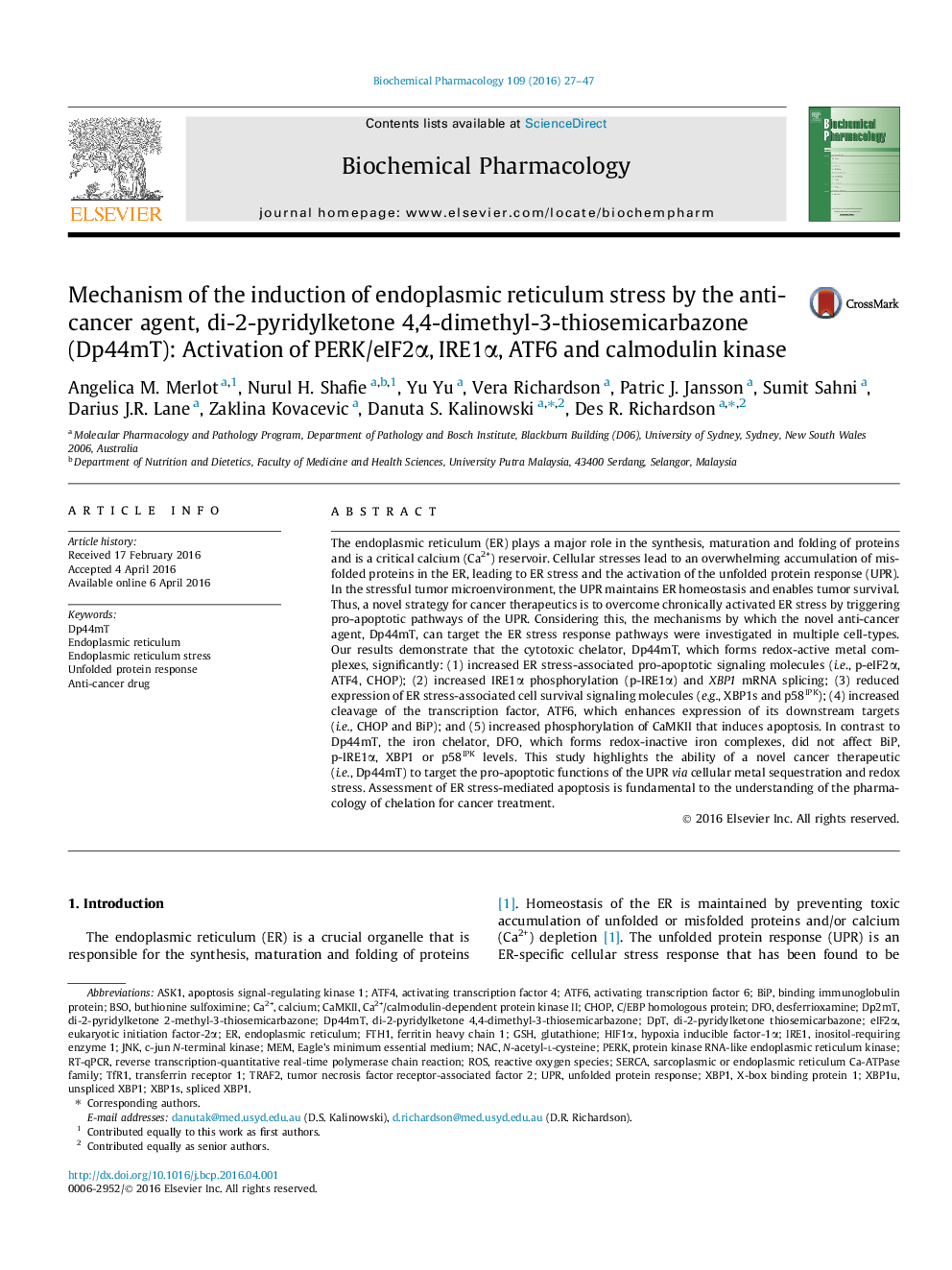| کد مقاله | کد نشریه | سال انتشار | مقاله انگلیسی | نسخه تمام متن |
|---|---|---|---|---|
| 2511776 | 1557903 | 2016 | 21 صفحه PDF | دانلود رایگان |

The endoplasmic reticulum (ER) plays a major role in the synthesis, maturation and folding of proteins and is a critical calcium (Ca2+) reservoir. Cellular stresses lead to an overwhelming accumulation of misfolded proteins in the ER, leading to ER stress and the activation of the unfolded protein response (UPR). In the stressful tumor microenvironment, the UPR maintains ER homeostasis and enables tumor survival. Thus, a novel strategy for cancer therapeutics is to overcome chronically activated ER stress by triggering pro-apoptotic pathways of the UPR. Considering this, the mechanisms by which the novel anti-cancer agent, Dp44mT, can target the ER stress response pathways were investigated in multiple cell-types. Our results demonstrate that the cytotoxic chelator, Dp44mT, which forms redox-active metal complexes, significantly: (1) increased ER stress-associated pro-apoptotic signaling molecules (i.e., p-eIF2α, ATF4, CHOP); (2) increased IRE1α phosphorylation (p-IRE1α) and XBP1 mRNA splicing; (3) reduced expression of ER stress-associated cell survival signaling molecules (e.g., XBP1s and p58IPK); (4) increased cleavage of the transcription factor, ATF6, which enhances expression of its downstream targets (i.e., CHOP and BiP); and (5) increased phosphorylation of CaMKII that induces apoptosis. In contrast to Dp44mT, the iron chelator, DFO, which forms redox-inactive iron complexes, did not affect BiP, p-IRE1α, XBP1 or p58IPK levels. This study highlights the ability of a novel cancer therapeutic (i.e., Dp44mT) to target the pro-apoptotic functions of the UPR via cellular metal sequestration and redox stress. Assessment of ER stress-mediated apoptosis is fundamental to the understanding of the pharmacology of chelation for cancer treatment.
Figure optionsDownload as PowerPoint slide
Journal: Biochemical Pharmacology - Volume 109, 1 June 2016, Pages 27–47